How many marketing tools exist that help businesses stay afloat? Quite a lot, and one of them is the STEP analysis, or PEST analysis, with which you can identify various environmental factors.
Explanation of this concept
The external macroenvironment, or external environment, of the company is studied using this method-model, which consists of four groups of factors.
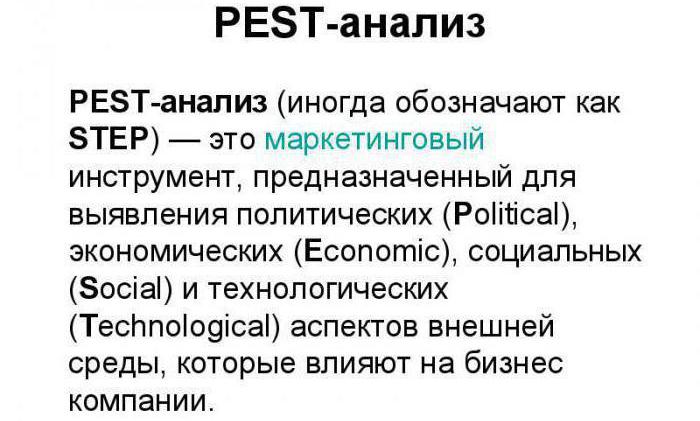
If you decipher this word, which consists of the first letters, it turns out that the STEP analysis is:
- Social - social factors.
- Technological - technological factors.
- Economical - economic factors.
- Political - political factors.
As a rule, when analyzing the influence of the external environment on a company’s activities, all factors affect it in order to see the big picture and understand what opportunities and threats exist, what actions have been taken, and which have yet to be taken. Each factor should be considered separately, but it should be understood that for each company the list of influencing factors will be different and you cannot take as a basis any of those listed in a certain table or list.
Social factors
Factors that relate to social can be the following:
- Demographic.
- Standard of living.
- Life style.
- The level of education.
- Taste and consumer preferences.
- Change in income.
For example, if you conduct a STEP analysis of a travel agency, then in recent years the average income level of the population has fallen - this is both an economic factor and a social factor, because it has affected the standard of living. If this had such an effect, then part of the population will refuse expensive rest and choose a simpler place. In this case, the travel agency should think about what it can offer its customers who can no longer pay for an expensive hotel, but at the same time they also want to relax.
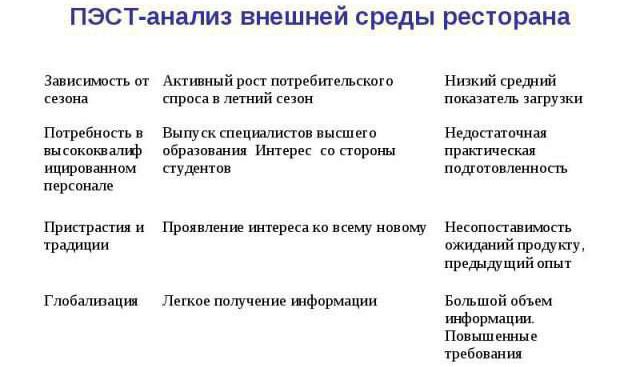
These factors include such factors as fashion, the influence of the media, lifestyle trends, etc.
Economic forces
This group of factors depends not only on the internal state of the country, but also on the external situation, therefore, these factors include here:
- The situation in the country and in various fields (boom, bust, crisis, bankruptcy).
- Financial condition (currency level against the ruble, inflation, refinancing rate).
- Prospects for economic growth in various fields.
- Unemployment rate.
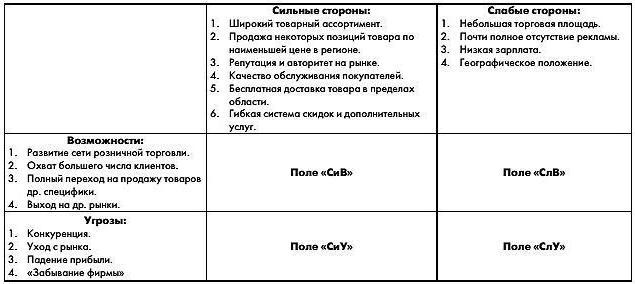
A STEP analysis of an enterprise cannot do without these factors; this is applicable to both large production and small business. Presidential elections, State Duma elections, legislative changes, regulation in the sectors, competition and support of a particular business will play their part.
Political factors
The next important group are political factors, which include:
- The level of political stability.
- Taxation.
- Business regulation.
- The approach of elections.
- Trade policy.
- The influence of the state on the industry.
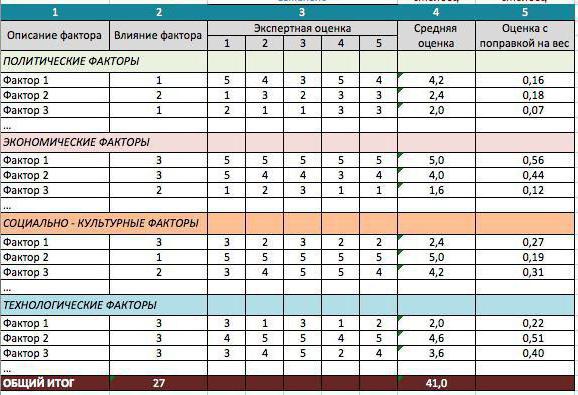
Of course, it is necessary to monitor the state of political stability, even if you conduct a STEP analysis for the hotel, because if, for example, stability decreases, this can affect social life and the flow of tourists.
Technological factors
The last but very important factors on the list are:
- New discoveries and technologies and their application in industries.
- The rate of change and adaptation to technology.
- The level of transfer of new technologies in the industry.
- The emergence of new goods and services.
For example, if you conduct a STEP analysis of a clothing or food store, then preference will be given to where fast service is, where the seller does not count the change on the calculator, and you can quickly find out how many specific goods are left in stock.
Two additional factors
STEP analysis was invented back in the last century, when people began to think about why their activities are not developing so well, although everything is stable inside the company. But since everything is changing, it has recently become fashionable and necessary to fight for the environment, and this is due to various laws. Therefore, recently, two more factors have begun to be added to four groups of factors: ecology and legislation.
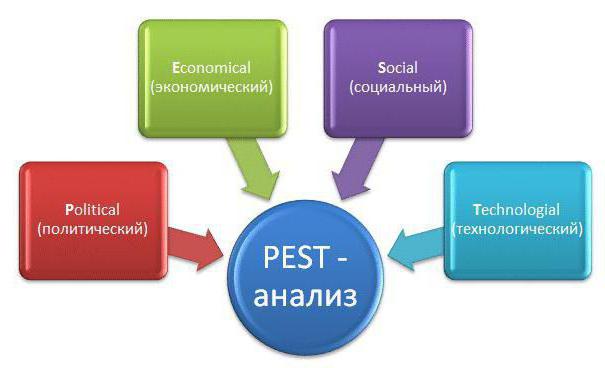
For many companies, one just cannot ignore the environmental factor, not only in their own country, but also where production is taking place. Although marketers argue about the addition of two groups of factors, because they believe that they can be included in the existing four groups. For example, add to the economic costs of cleaning water, air; social factors include attitude to a healthy lifestyle; to technical and technological - the development of technologies that will reduce the impact on the environment, such as solar panels or non-gas engines; political factors are all kinds of laws, standards and requirements in the field of ecology.
One way or another, if we add two more to the four existing groups, we get the following method name: STEEP or SLEPT, in Russian STEP or STEP analysis.
Analysis Steps
STEP analysis is very often used in conjunction with SWOT analysis, i.e. this is a study of the internal environment of the enterprise, and, as a rule, each study involves the inclusion of certain actions and sequential steps.

Actions when using this tool:
- Goal setting. Without a specific goal, a good result will not be achieved. It is important to understand that this analysis is carried out in order to understand what strategy needs to be developed for the development of the company, to determine its competitiveness, etc.
- Select the object of study. It is clear that STEP analysis is used for some company or enterprise, but it should not be considered an object, as is often the case. For an object, relations are most often taken, for example, of a company and a specific market, a bank and an interested party.
- Identification of factors. General factors that can affect not only the company, but the whole country as a whole, are best discarded. Be sure to consider the time period, it can be both short-term impact and long-term. Moreover, for the purpose of research, it is important to rank factors according to the degree of their influence, impact on possible achievements and threats on their part.
- The division of factors into groups. Some factors are easily attributed to the group, with some difficulties may arise. In any case, it is important to understand the significance, and the category is already secondary.
- Additional analysis. Perhaps, in the research process, additional analysis may be needed on the interdependence of factors, the mechanism of their influence, or the study of the direction and speed of their change.
Benefits
Each analysis model has its own advantages and disadvantages, and a firm that will research its activities should know why it is worth using STEP analysis.
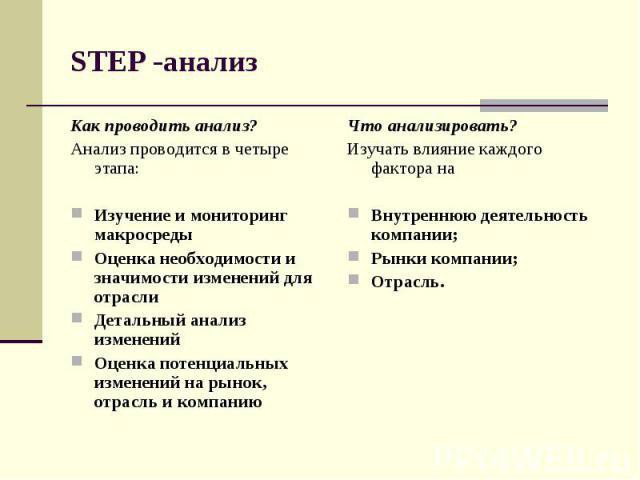
Firstly, it helps the leader and employees not only to study external factors, but also to think about them and their impact. Secondly, a culture of vision of these factors is brought up, which helps in the future, when new development steps are thought up. Thirdly, it helps to understand the general picture of the external environment, after the analysis is completed.
Carrying out such an analysis is a simple task if you know and take into account all the important factors for a particular company, and in the future it will only be beneficial when you develop the habit of monitoring and reflecting on the external environment.
Problems and limitations
Before proceeding with the analysis of the influence of factors on the company’s activities, it is worthwhile to clearly identify these factors in each environment, since the set is not universal, and an individual list is made for each company. This is a certain problem, because often firms take several factors from each group, apply their activities to them, and as a result, we get the wrong conclusion and wasted time.
There may be few factors in one group and many in the other, and this list should be carefully worked out.
If the company is engaged in the production and creation of different product groups, then for each direction it is worthwhile to conduct its own analysis, otherwise everything will be done in vain.
STEP analysis: an example
A universal example should never be used for a specific company, it can only be studied to understand how to proceed. Consider an example - analysis for a company selling products.
If we consider the influence of political factors, then recently regulation of the market has intensified, and this means that the influence on it has tightened. From an economic point of view, this showed that small retailers began to leave the market, which means that the share of retail chains increased. In the social sphere, real incomes of citizens decreased, and consequently, this affected the fall in demand for elite goods and increased the demand for consumer goods. From the point of view of technological factors, they began to use retail automation, which means that this has affected the cost advantages for those stores that use these technologies.